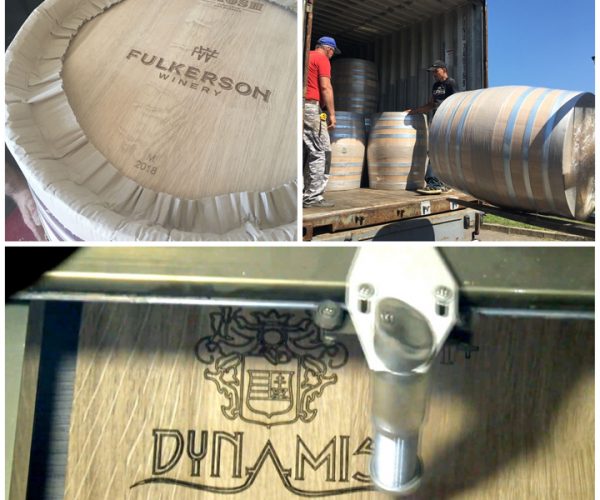Barrels production
Selecting the tree
We start barrel production in the forest by selcting oak logs. The coopers personally check its structural properties, sorting according to the most important aspects. The diameter of the log, the straightness of the fibers, the absence of spasms, the density of the annual rings and the grains are the most determining aspects. The oak barrels are made from high quality sessile oak, “Quercus Petreae”. Only three out of the approx. 500 species of oak are recommended for use by coopers. Namely the pendunculate, the unpendunculate and the American white oak. The Quercus Robur and the Quercus Petraea are used in Europe. The Quercus Petraea of the North Hungarian Mountains and the sessile oak from the Carpathians are the most prestigious. The Quercus Petraea has a dense granular structure, provides slower fermentation, slower oxidation, longer dissolving aromas than the American oak (Quercus Alba).

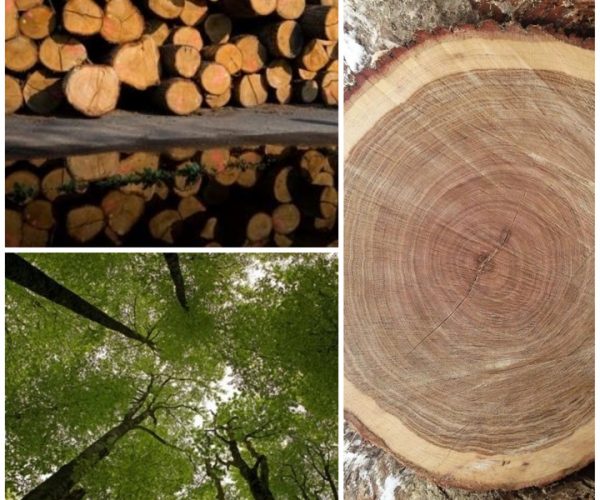
The nearly 500 species of oak, only three are recommended for coopers. Pedunculate, unpedunculate and American white oak. Of the Quercus Robur and Quercus Petraea used in Europe. The Quercus Petraea has the highest prestige from the North Central Mountains in Hungary, and and sessile oak from the Carpathians. The Quercus Petraea is structurally dense granular, provides slower fermentation, slower oxidation, longer dissolving aromas than American oak („Quercus Alba”). “Quercus Petraea” shows much spicier notes, but is softer, silkier, and less characteristic in tannins than „Quercus Robur”.
Maturation of staves
What winemakers do not like is the oak tannin! An essential component of wood. The good news is that coopers can reduce it to the extent necessary by naturally maturing and hydrolysing the wood!
Tannin also has beneficial effects:
– acts as a pesticide, produces caffeine, its bitter taste protects wood from bacteria and insects
– needed for long maturation and micro-oxidation of wine, in small quantities.
– The tannin aroma is similar to apples.
– The amount of tannin can be regulated; it cannot be easily broken down with high temperature, but can be broken down with water! The effects of sunshine, rain, wind and ice are very important, the goal is for the tannins of the oak tree to lose their astringent taste, so that when they interact with the tannins of the wine, they complement each other nicely and make the wine silky. The staves are matured in the open air for a minimum of 24 to 36 months

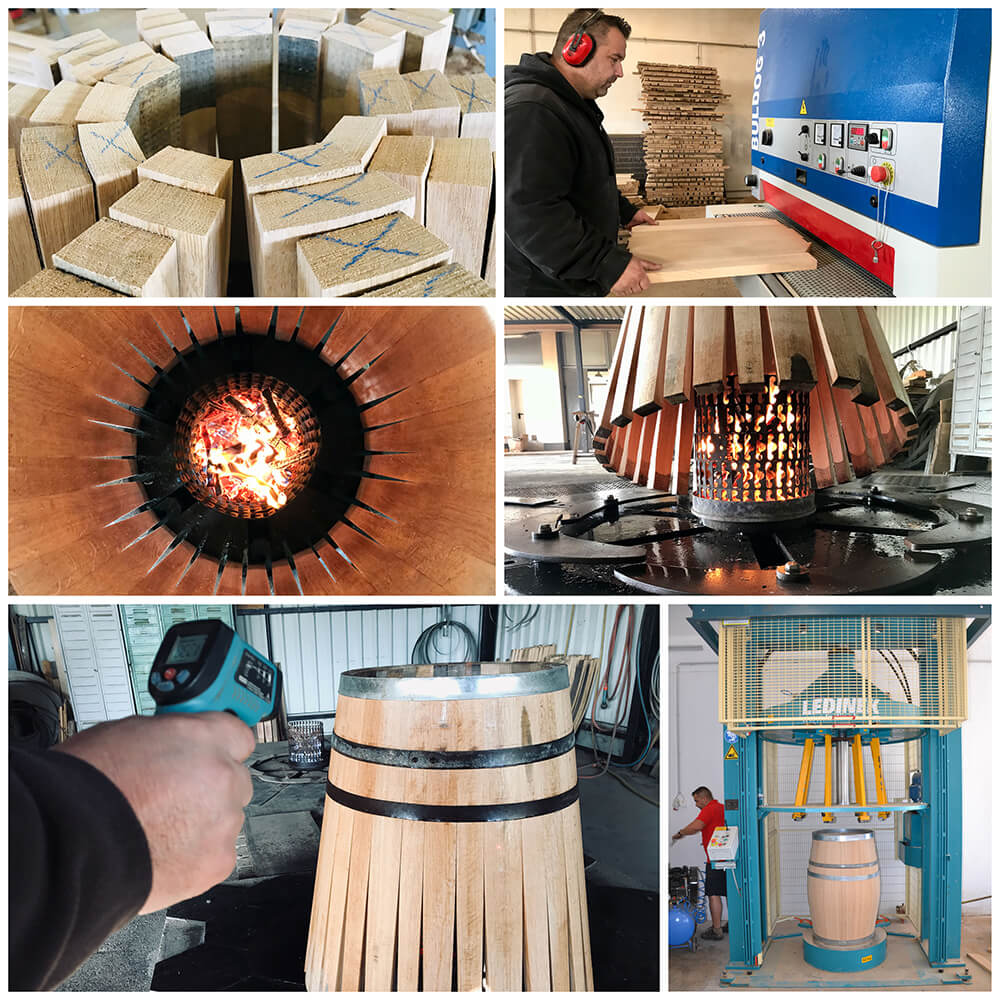
Making a barrel body
Processing of the sufficiently dry material, aged for 24-36 months, begins again with sorting. The cracked ends are removed, followed by very precise machining. Although it is barely visible to the naked eye, all surfaces and edges of the stave receive an angle or arc. The “mantle” held together by the work tire is preheated over an oak fire, sprinkled with water vapor, and then the evenly embracing steel arms of the machine pull together the free lower end of the staves.
The barrel body is formed naturally by heat treatment of the raw material using a hydraulic
press machine.
The toast
The degree of roasting also affects microoxidation, as heat compacts the tissues of the inner surface of the barrel, loses its water content, and covers the inside of the mantle as an insulating layer. The deeper the heat penetrates the material, the wider this insulating layer will be. It is therefore very important that the degree of roasting is always agreed with the winemaker.
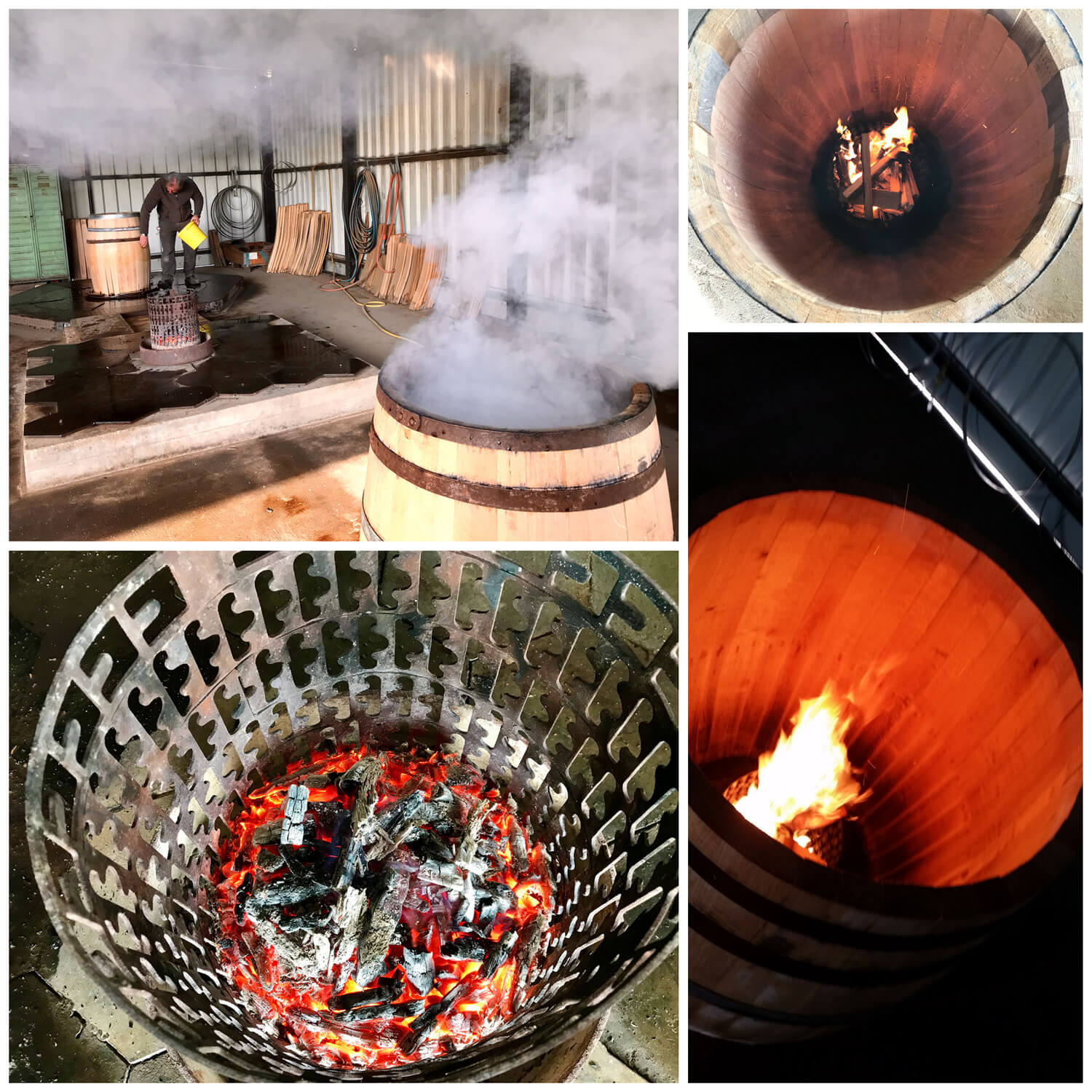
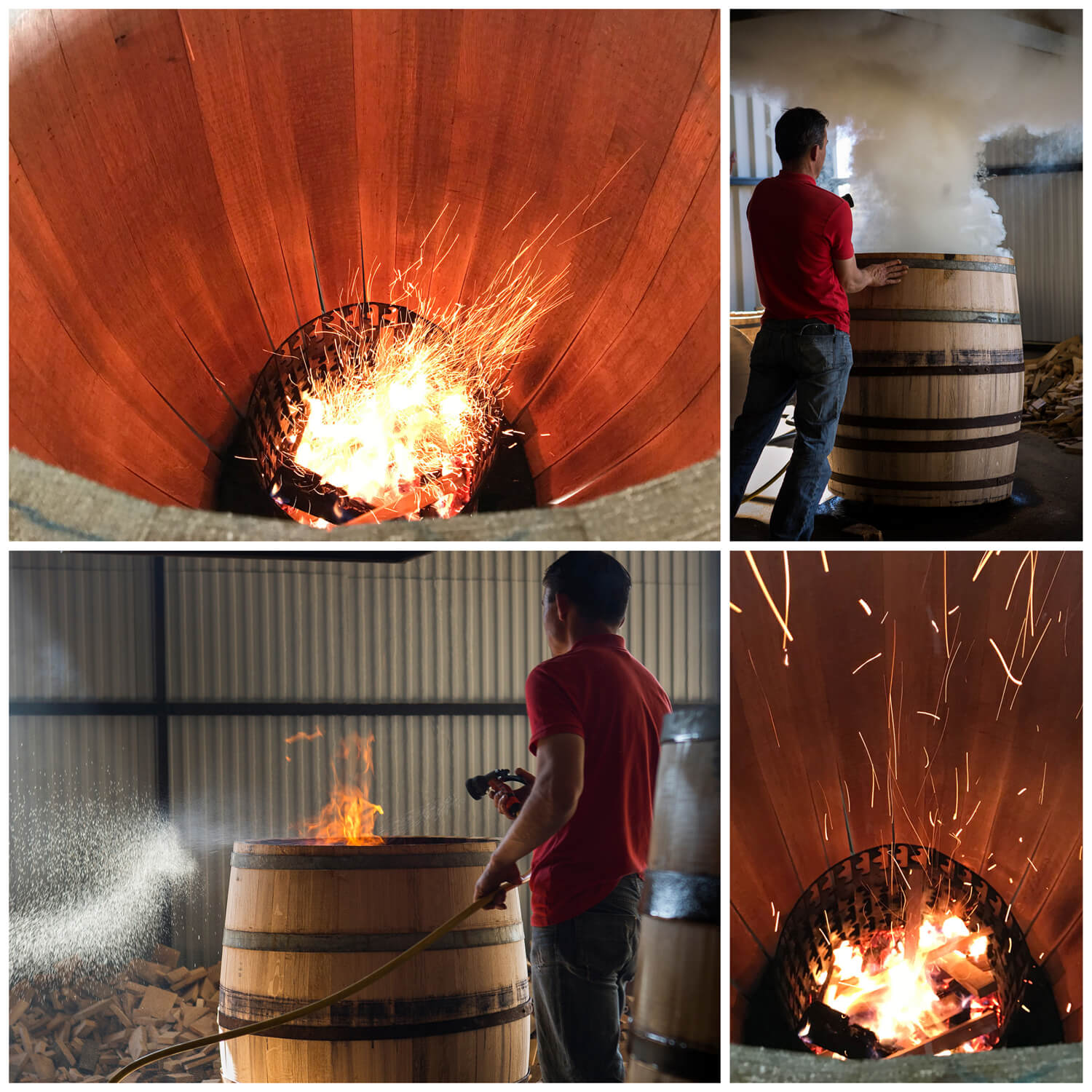
For heat treatment and toasting of the barrel we use our own oak waste material and regulate the amount of toasting. Which according to customer requirements can be: natural (N), light (L), medium (M), medium + (M +), strong (H) and all toasting levels can be made with head toasting (TH). The degree of toasting is indicated on the flat surface of the barrels by laser engraving.
TOAST LEVELS:
Light toasting:
Due to the light toasting at 90-180 C for 20 minutes and since the burning does not reach the deeper layers of the staves a lot of tannins remain in the wood, and the wines in it will be more astringent and acidic.
 Slightly brown colors and fine vanilla, almond, walnut butter and maple notes in the lightly toasted barrel. (L)
Slightly brown colors and fine vanilla, almond, walnut butter and maple notes in the lightly toasted barrel. (L)
Medium roasted:
Medium roasted (M) oak is roasted at 180-220 ° C for 40 minutes. The coopers swear by it and it is considered as a kind of “Jolly Joker”. It gives less tannins but more flavour and aroma, gives the wine a warmer, sweeter character because the sugar stored in the cells of the wood is more caramelized.
 Deep brown colours, vanilla and caramel aromas in medium toasted barrel (M)
Deep brown colours, vanilla and caramel aromas in medium toasted barrel (M)
More heavily fired barrels:
In the case of more heavily fired barrels (M +), these marks only increase, setting more serious expectations for wines as well. A barrel with more characteristic aromas can result in coffee, roasted hazelnuts, caramelized, candied, dried fruit or smoky notes, so it can only be a suitable choice for large vintage grapes from exceptional areas.
 Smoky vanilla, almond, coffee aromas in M + barrel
Smoky vanilla, almond, coffee aromas in M + barrel
Heavily toasted:
Heavily toasted (H) “heavy” barrels can be fired for up to one hour at 280-300 ° C. It is characterized by tobacco, bitter citrus, deep smoke aromas. (H)

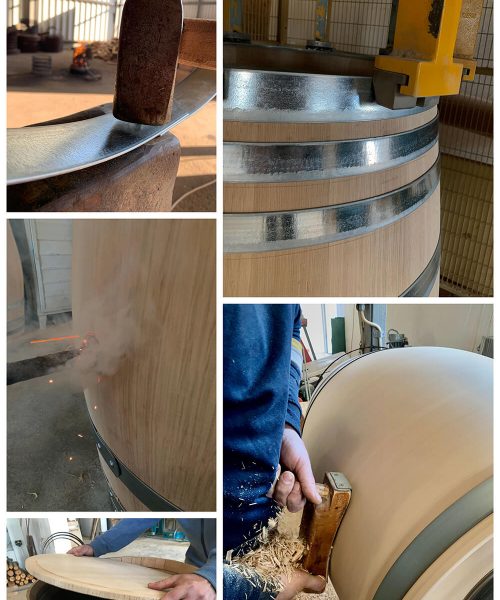
Final touches
After the roasting, machine work is carried out again, the barrel ends are machined, the joint of the flat plates (bottom) is formed and then inserted. This is followed by sanding the outer surface of the barrel. The resulting barrel is equipped with 6-8 galvanized steel hoops. This operation is performed by using a hydraulic press machine, which evenly and firmly fits the steel hoops onto the barrel.
Engraving, packing
If required, the year of manufacturing, the manufacturer’s mark and the Customer’s logo are placed on one of the flat sheets of the barrels with laser engraving. The barrels are tested with press 0.5 bar and water. The barrel is packed in foil with a silicone bung.
